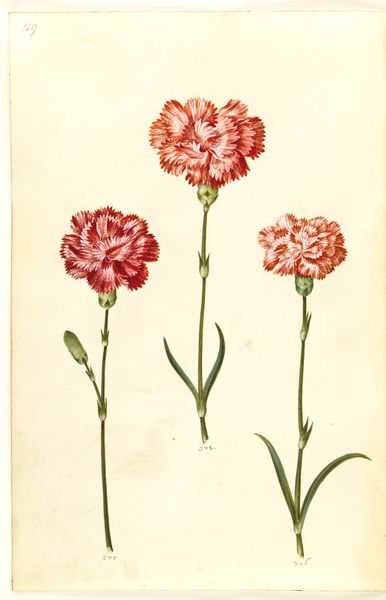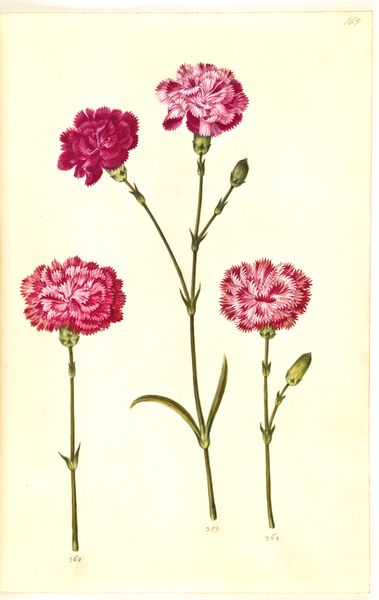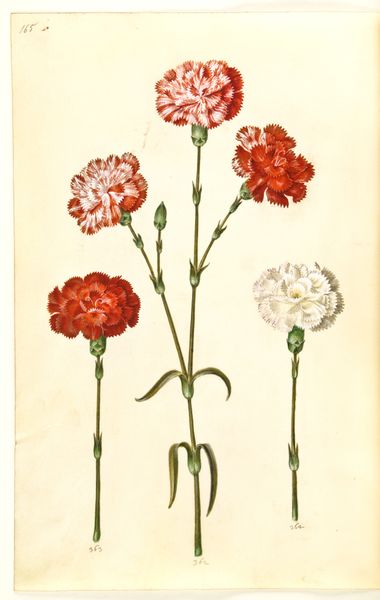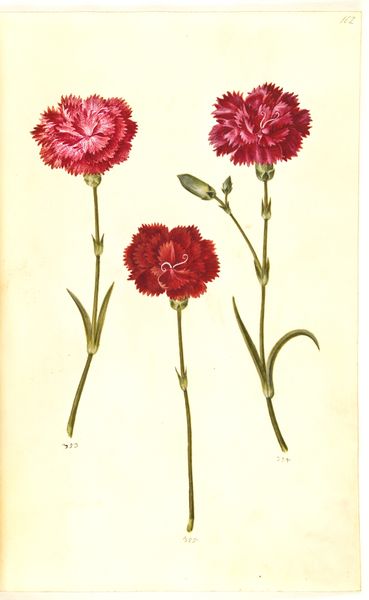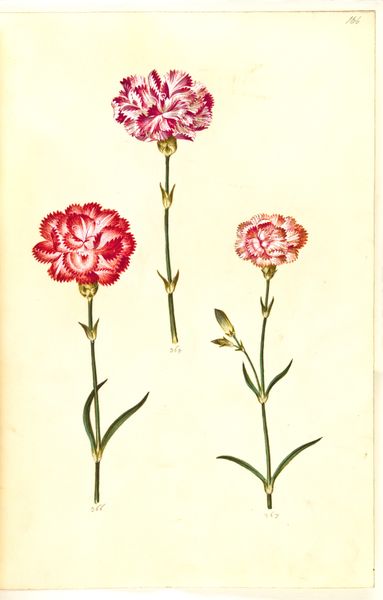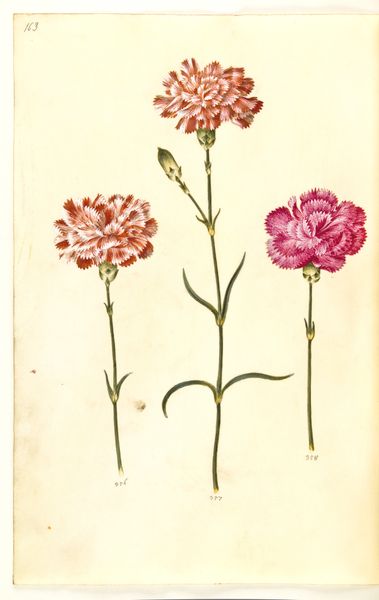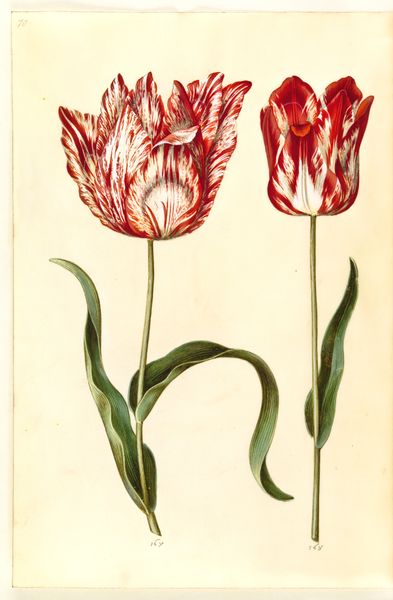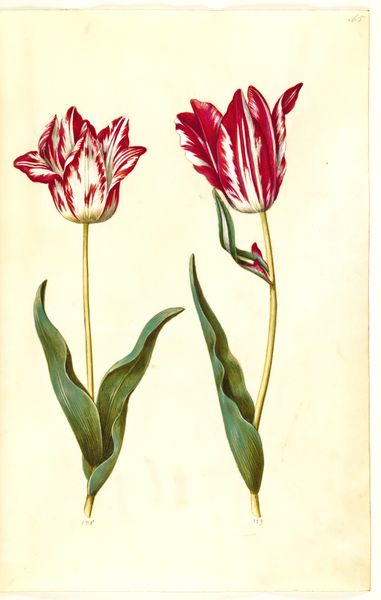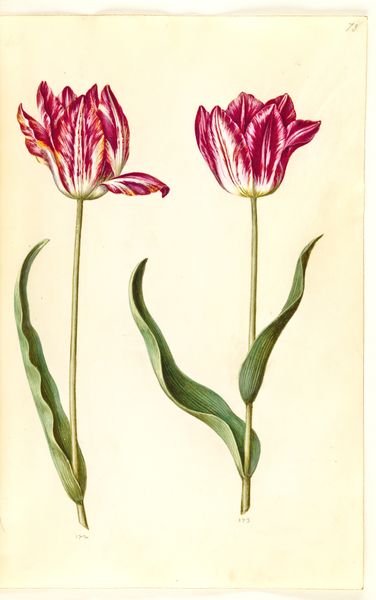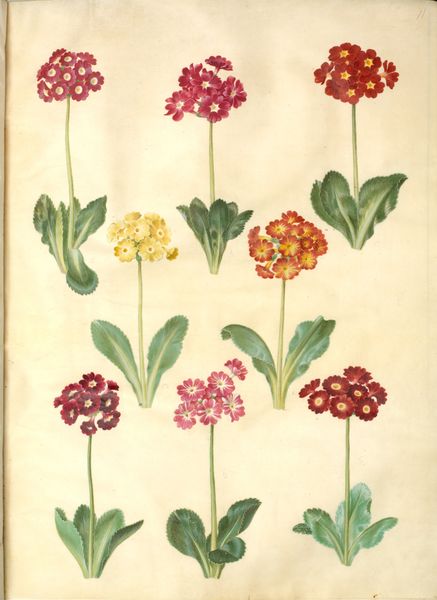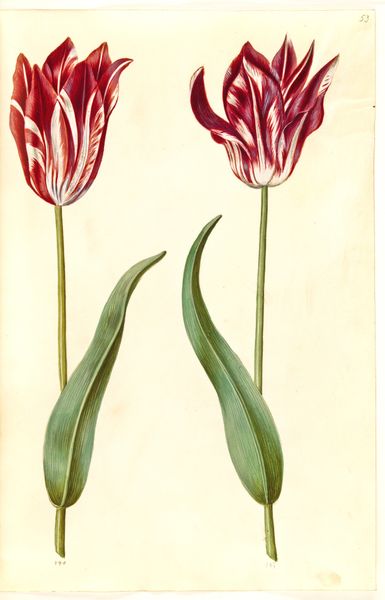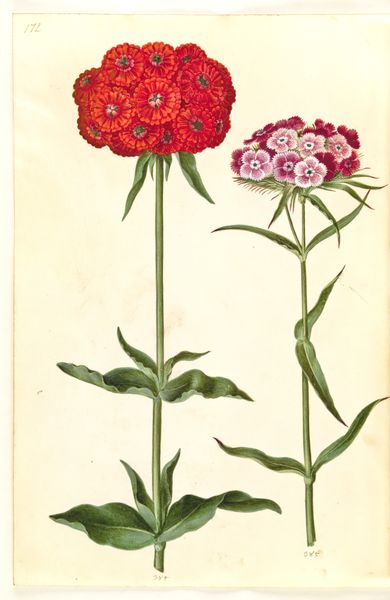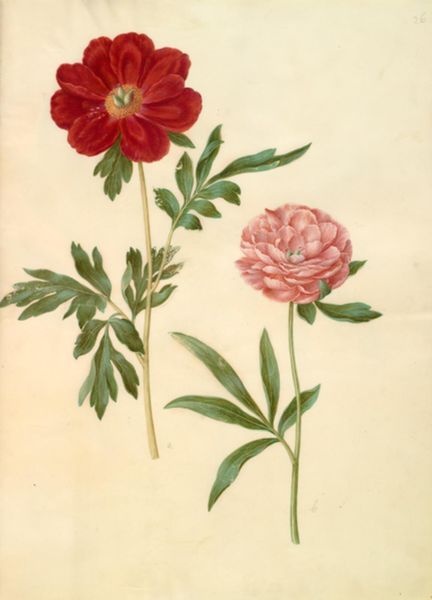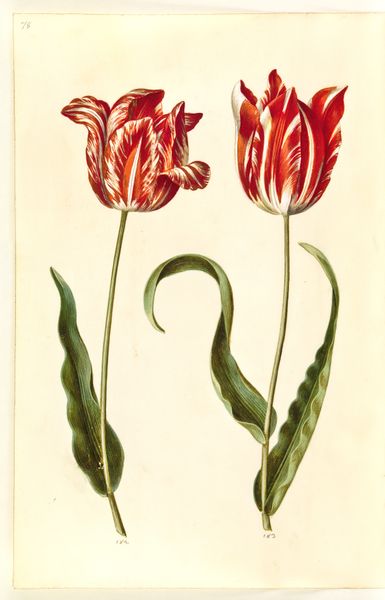
drawing, gouache
#
drawing
#
gouache
#
academic-art
Dimensions: 375 mm (height) x 265 mm (width) x 85 mm (depth) (monteringsmaal), 358 mm (height) x 250 mm (width) (bladmaal)
Here, Hans Simon Holtzbecker depicts several specimens of Dianthus caryophyllus, commonly known as carnations. These blooms, rendered with delicate precision, carry a wealth of symbolic weight dating back to ancient times. In the Renaissance, the carnation was often used to symbolize love, marriage, and affection, appearing in portraits as emblems of betrothal or fidelity. The flower's vibrant colors – particularly the reds and pinks seen here – amplify its association with passion and emotion. Consider how the motif of the flower, laden with emotional significance, transcends Holtzbecker’s botanical study. We can see it repeated throughout history, from ancient Roman garlands to Victorian-era bouquets, each time subtly shifting in meaning yet retaining its core association with deeply felt human experiences. The carnation, much like the human heart, is a timeless symbol, forever blooming in the garden of the collective psyche.
Comments
No comments
Be the first to comment and join the conversation on the ultimate creative platform.
